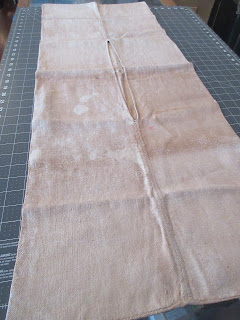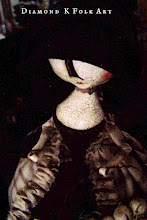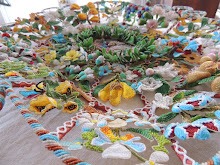Your Wallet!
I'll be on my way to Colonial Williamsburg this next week and am thinking about what bags I need to drag out from the depths of the closet. I almost can't remember the last time I flew someplace. It would be so much easier to open the drawer and pull out a few wallets instead. Much softer. Much more portable! I bet if I asked you what an 18th c wallet looked like you would describe a tri-fold shaped object made of leather, or perhaps even linen, and possibly decorated with flame or tent stitch embroidery.
Nope. That's more of a pocketbook, not the huge linen gorgeousness seen below.
Often referred to nowadays as a 'Market Wallet', in the 18th c and before, it was simply called a wallet or bag. They are somewhat rare, being such a utilitarian object. Of course, that is what really attracts me to add objects to my collection. I like the common everyday use things that weren't saved because they got used until they fell apart, and then their parts were reused for other things.
Just look at the expanse of good linen there is here! I have photographed it on a cutting mat marked with one inch squares. It measures 15" across, and 39" long. The center opening is 14" long. I can think of a million things I could make out of this wallet, especially since it is constructed from a single piece of cloth.
The back is plain, there are no markings save for the once red initials, " JM ", stitched at the base of the center opening (shown in the very first photo).
The edges along the opening are finished so there are is no fear of raveling. Objects could be placed in either or both ends of the wallet, and it was carried over the shoulder. Some early illustrations show it just slung over the shoulder with the opening visible and others...
including the above 1760-ish painting by Francoise Duparc, shows how it could be twisted to conceal the opening for more security. Both men and women put food, clothing, personal belongings, even animals into these bags... If you can name it and it fit through the opening, it could be carried in this bag.
The early 17th c painting above shows a woman, to the center foreground, with a similar wallet over her arm. If you click the photo or link to the Fitzwilliam's Museum page, you can see her better.
Reusable, eco-friendly, biodegradable, and recyclable bags....not a new concept by any means.














